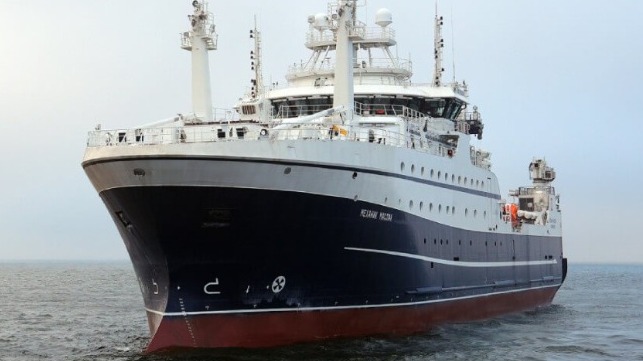Russia's Shipbuilders Struggle to Meet Timeline for Fishing Fleet

Since 2017, Russian regulators have pushed fishing operators to invest in new Russian-built tonnage by linking catch quotas to shipbuilding orders, hoping to spur business for Russian shipyards and modernize the fishing fleet at the same time. There are just two problems: the Russian shipbuilding industrial base can't build the fishing vessels fast enough, and the domestic supply chain for key equipment is severely restricted.
At its launch in 2017, the program set aside 20 percent of the catch quotas for key fisheries in the Russian Arctic and Far East for companies that build new vessels or new processing factories within Russia. In 2019, it expanded to include 50 percent of the catch quota for crab fisheries. More than 100 vessels have been ordered to meet the terms of these quota agreements - but barely more than a dozen were delivered by the beginning of this year, and Russian shipyards have lost more than half a billion dollars on the contracts, the Federal Agency for Fishery (Rosrybolovstvo) reported in February. The delays are due in part to a shortage of skilled labor.
Meanwhile, the requirements for domestic content are tightening. In 2021, the quota regulation was amended to include a detailed points assessment, which would be used to determine the degree of Russian-made content in each vessel. In the U.S., the formula for a domestically-built vessel is simple: the hull structure must be fabricated in the United States, and any other component can come from any source. The new Russian "localization" rules for fisheries go deeper, and require crab fishing vessels to demonstrate a percentage of local content throughout the vessel in order for it to be "recognized as Russian."
The rules apply for all keel-layings after July 2023, and Russian crabbers say that they simply can't be met by the current industrial base.
"Such a bar cannot be achieved without the installation of a domestic propulsion system, and import substitution in this area still needs time," Association of Crab Producers president Alexander Duplyakov told Russian outlet FishNews. But even for equipment that comes from Russian suppliers, getting the paperwork to prove that it is compliant will be a challenge to do in time, he added.
The association would like to push back the date for the compliance requirement to 2025 in order to buy time. This is especially important for Russia's crabbers because their government is preparing to hold another round of quota auctions, which will incorporate the stringent domestic shipbuilding requirements into its terms.
